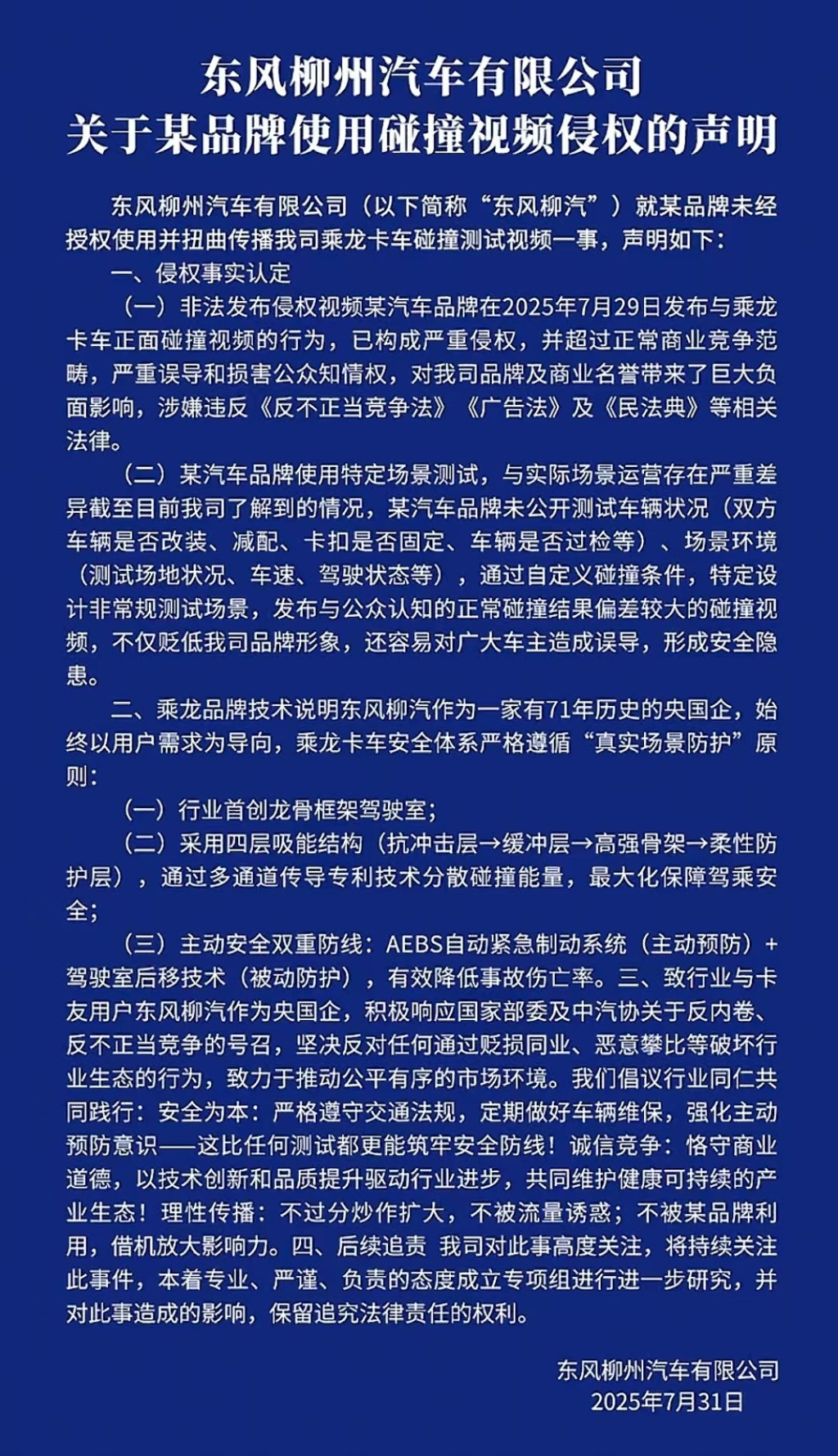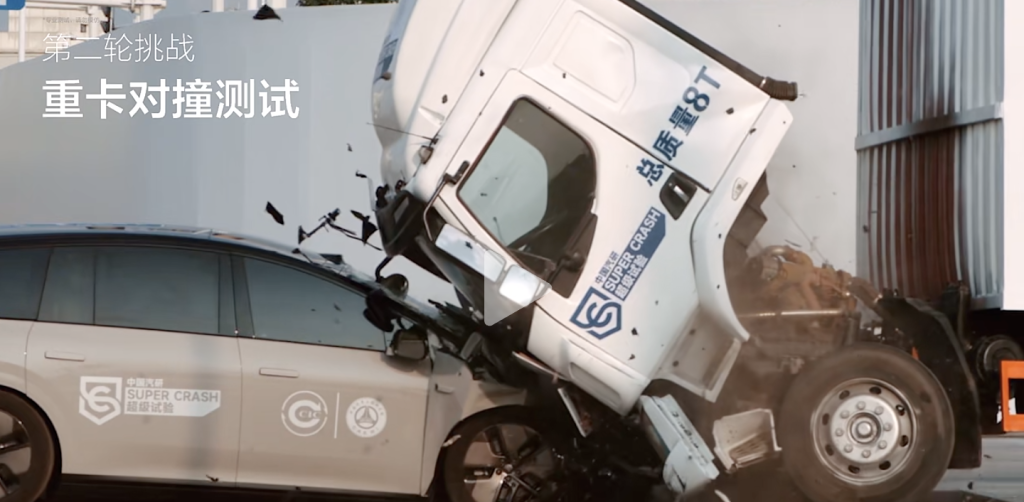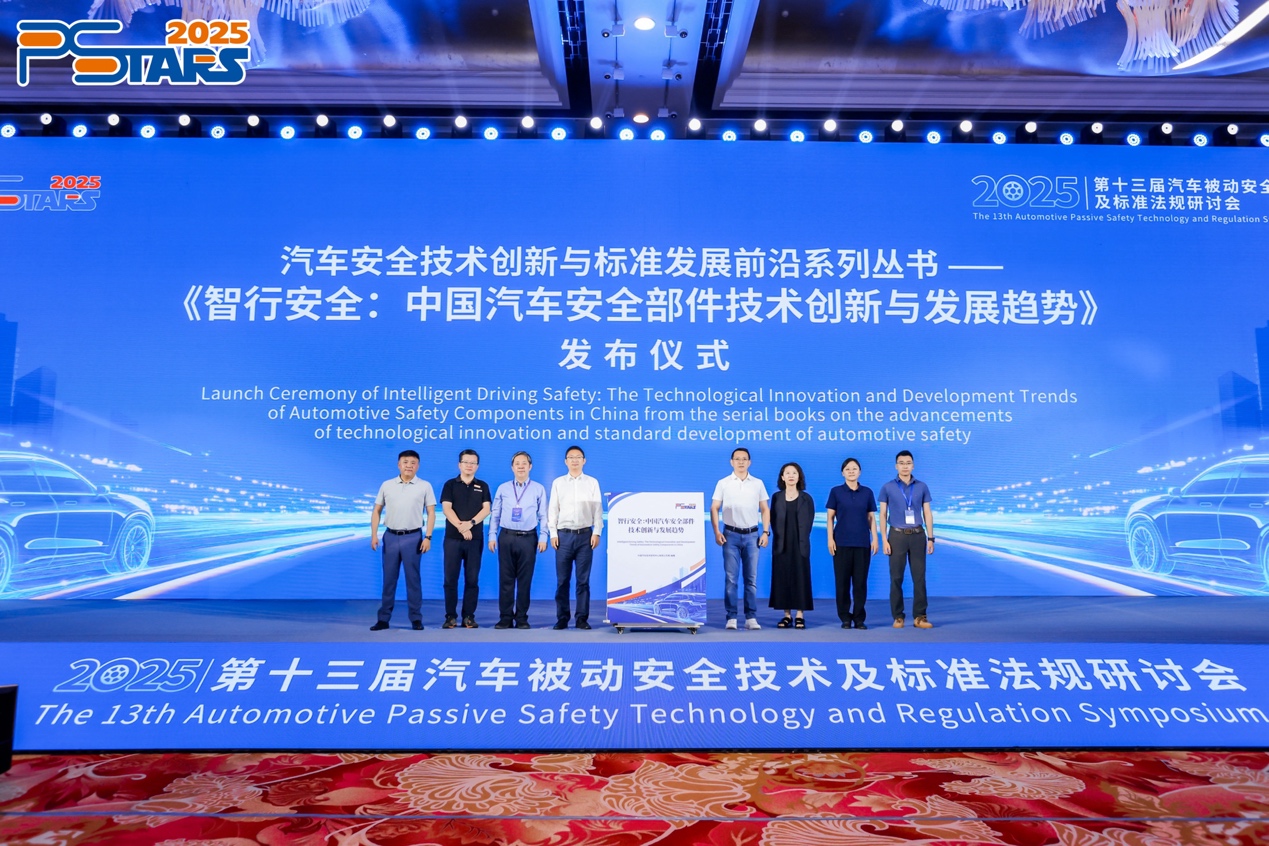
At its i8 model launch conference, Ideal Auto showed a collision test video with a Dongfeng Liuqi Chenglong truck, which quickly attracted widespread attention.
In the video, after a head-on collision at 50 km/h, the Ideal SUV remained relatively intact, while the 8-ton Chenglong truck suffered significant damage, with the cab and cargo compartment separated and the front of the truck overturned. This has led some public opinion to question the safety of trucks.
Dongfeng Liuzhou Motor subsequently issued a statement, explicitly stating that Ideal's testing activities constituted "serious infringement" and exceeded the scope of normal commercial competition. The statement raised two key concerns: first, the lack of transparency regarding the testing conditions, which failed to specify whether the vehicles on either side were modified, their fixed state, or the compliance of the testing; and second, the testing scenario, which was divorced from the physical laws of actual road accidents and constituted a custom, unconventional collision.

From a technical perspective, this collision presents an inherent asymmetry. The safety design concepts and objectives of passenger cars and commercial trucks are inherently different. Trucks, with their substantial mass advantage (8 tons vs. 2 tons), typically have an advantage under the principle of conservation of true momentum. The unusual fracture of the truck cab in the video, a counterintuitive result, raises suspicions.
Furthermore, a head-on collision between the two cars, given their huge weight disparity, completely different mechanical transmission paths, and vastly different center of gravity, doesn't make much practical sense.
The collision test controversy between Ideal i8 and Chenglong Truck is apparently a technical dispute between the two automakers, but in fact it touches upon the contradictions in the automobile safety evaluation system.
Although the China Automotive Engineering Research Institute (CAERI), the test executor, stated that "the entire test process complies with all regulations and standards" and "no truck parameters have been adjusted," there are still two issues regarding its compliance that are worth discussing.
First, the applicability of the testing standards. CARI explicitly stated that this test "does not constitute a publicized entry-level test" and is solely a "vehicle development verification" project. This positioning directly exposes a core issue: the lack of industry-recognized testing protocols. Currently, no global NCAP system, including China's C-NCAP, has standardized procedures for head-on collisions between passenger cars and trucks.
The ideally designed two-car collision scenario at 50 km/h is a custom operating condition. Even if this test adheres to laboratory operating procedures, the results, which are outside of a standardized framework, lack a comparable benchmark and therefore lack industry reference value.

More importantly, the scenario design deviates from the actual accident form.
In actual truck accidents, rear-end collisions and rollovers account for over 70% of accidents, while head-on collisions are extremely rare. Dongfeng Liuzhou Motor Co., Ltd. noted that its patented designs, including the rearward-shifting cab technology and four-layer energy-absorbing structure, are optimized for energy dispersion in rear-end collisions, rather than for an idealized "ring-and-seat" collision. The China Automotive Research Institute (CARI) has not addressed this scenario mismatch, raising questions about the engineering significance of the test.
The second is the lack of test transparency and data integrity.
Dongfeng Liuzhou Motor questioned Ideal's failure to disclose details about the vehicle's condition, including whether the truck's buckles were secure and the status of the cab's locking mechanism. These details could have a decisive impact on the outcome.
Based on the video, the truck dealer speculated that the abnormal tilting of the cab may have been caused by an inactivated locking mechanism. However, the China Automotive Research Institute (CARI) only confirmed that the truck was "brand new" without disclosing its specific configuration or inspection report, making it difficult to rule out operational factors as a possible cause.
Even more critical is the issue of selective data presentation. The China Automotive Research Institute (CARI) has sparked similar controversy in the past. In the 2021 C-IASI 25% offset crash test, the Ideal ONE suffered significant bending of the A-pillar and severe intrusion into the passenger compartment, yet still received a "G" (Excellent) rating. This significantly differed from the performance of the NIO EC6 tested at the same time, yet it received the same score, raising questions about the objectivity of the ratings.
The Ideal i8 video also focused on the structural integrity of the SUV, but did not show damage data on the dummy inside the truck cab, which is a core indicator of commercial vehicle safety.
This controversy reveals two major misunderstandings in current automotive safety verification.
China Automotive Research Institute's "compliance" statement only indicates that the test meets the requirements of the client, but the core of commercial vehicle safety lies in system protection under complex working conditions, rather than the performance in a single collision.
On the ideal side, they attract attention through visual impact tests, but ignore the underlying logic of truck safety design - sacrificing the replaceable cab structure in exchange for the driver's living space, which is actually a manifestation of engineering wisdom.
The most regrettable aspect of this test is that it presupposes that consumers are "easily persuaded by visual impact." Safety isn't about being "invincible" in customized testing, but about whether automakers can honestly answer the following questions: How will my car protect you in a real, high-incidence accident? How does my technology reduce the likelihood of an accident? Does my data withstand long-term scenario replication?
When companies replace these answers with "compliant but questionable" testing, it demonstrates a disregard for consumers' cognitive abilities. There are no shortcuts to safety; only respect can ensure sustainability.


